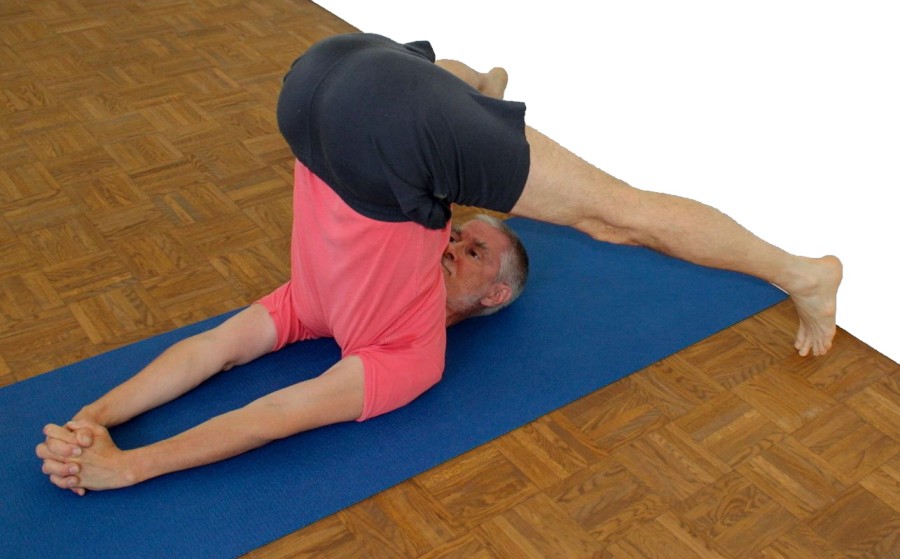yogabuch / asanas / supta konasana
supta konasana
„lying angle“

 instructions and details with working links as PDF for download/print
instructions and details with working links as PDF for download/print
Feedback: We would love to hear what you think about this description, give us feedback at:
postmeister@yogabook.org
last update: 12/30/2018
Name: supta konasana
Trivial name: lying angle
Level: A
- Classification: A
- Contraindication
- Effects of
- Preparation
- follow-up
- derived asanas
- similar asanas
- diagnostics
- Instruction
- details
- Variants
Classification
classic: reclining posture
Contraindication
Effects
- (602) Strengthening of the back extensors
- (721) Stretching the hamstrings
- (751) Stretching the adductors
- (756) Stretching the gracilis
Preparation
Follow-up
derived asanas:
similar asanas:
Diagnostics (No.)
Variants:
Instructions
- Assume halasana and walk your feet further outwards.
- As in halasana, stretch the back by using the autochthonous back muscles, if necessary.
Details
- Compared to halasana, it is a little easier to stretch the back here, similar to upavista konasana compared to dandasana, i.e. the straddle pose requires a little less stretching ability in the hamstrings.
- Here too, it makes sense to support the back with the hands in order to use the strength of the arms to stretch the back. However, if the focus is on strengthening the back, the arms can be stretched out behind the back, fingers interlocked, arms turned out at the shoulder joints.
- If necessary, the feet can be supported, e.g. with blocks. As the ankles make a small stretching movement so that the back can stretch more easily, a patch between the blocks and feet may be necessary to provide sufficient friction.
- As in similar postures, a support under the shoulders can also be used here if the stretch demand on the cervical spine is too great.
Variants
supta konasana right-angled

Instruction
- Assume halasana, always bring strength into the back muscles and slowly raise the legs until they are horizontal.
- Support your back with your hands to push it towards the vertical.
Details
- All the statements made in the shoulder stand apply analogously here, especially where the careful handling of the neck is concerned.
Feet on elevation

Instructions
- Perform the pose so that the balls of your feet are on a raised surface, e.g. on blocks.
Details
- If the backs of the thighs are less flexible, it will not be possible to keep the back straight when the feet are placed on the floor. In this case, it may be useful to elevate the feet.
Shoulders on elevation

Instructions
- ..
Details
- This variation is the exact opposite of the last variation, which is why it can be expected that it is more difficult to place the feet on the floor with the back straight than in the standard variation. However, the purpose of this variation is different: to relieve strain on the thoracic spine/spinal column by reducing the bending requirement, as is also used in the shoulder stand.
- Regardless of how the feet are placed on the floor, the elevation should be so high that there is no discomfort in the neck beyond a very moderate stretching sensation. The stretch in the back of the legs may be intense regardless of this.
